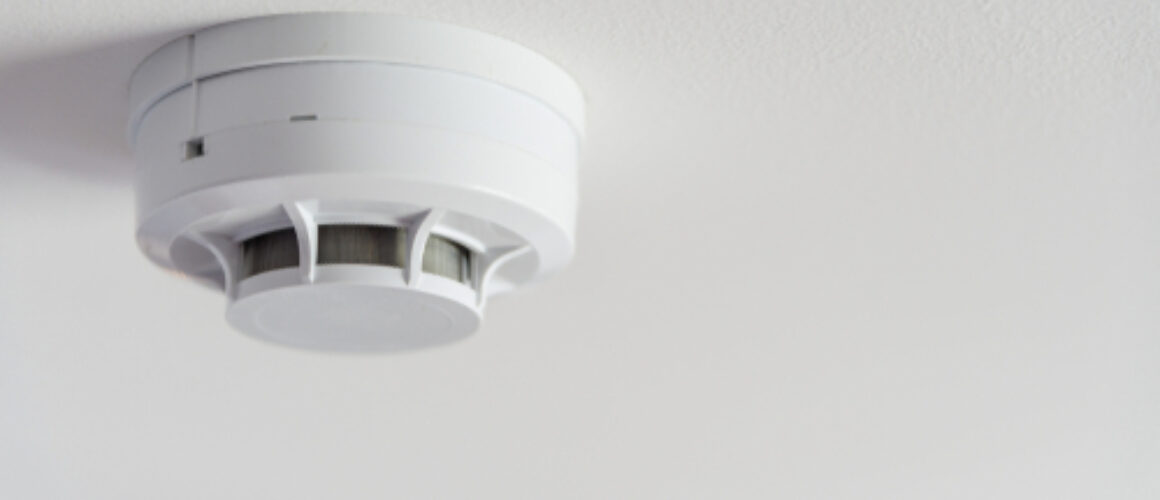Smart Home Safety: Integrating Fire and CO Detection into Your IoT Ecosystem
In today’s digital age, our homes are becoming smarter and more connected than ever before. We can control our lights, thermostats, and even our security systems with just a few taps on our smartphones. But what about the safety of our homes? How can we integrate smart technology to ensure the safety of our loved ones and our valuable belongings? One essential aspect of smart home safety is the integration of fire and carbon monoxide (CO) detection systems into your IoT ecosystem. Let’s explore how you can achieve this and gain peace of mind.
Why is Fire and CO Detection Important?
Fire and CO detection are crucial for every household, regardless of whether you live in a smart home or a traditional one. Fires can spread rapidly, causing severe damage to your property and endangering lives. Carbon monoxide, on the other hand, is a silent killer as it is odourless and invisible. Integrating fire and CO detection systems into your IoT ecosystem ensures that you are alerted immediately in case of any potential threats, giving you valuable time to take action and protect yourself and your loved ones.
How to Choose the Right Fire and CO Detection System
When it comes to choosing the right fire and CO detection system for your smart home, it’s essential to consider a few factors. Firstly, ensure that the system is compliant with the latest safety standards and regulations. Look for certifications such as EN 54 for fire detection and EN 50291 for CO detection. These certifications guarantee that the system has undergone rigorous testing and meets the highest standards of safety.
Secondly, consider the features and capabilities of the system. Look for advanced technologies such as multi-sensor detection, which combines smoke and heat sensors for more accurate and reliable detection. Additionally, consider whether the system can be integrated with your existing IoT ecosystem, such as your smart home hub or voice assistants like Amazon Alexa or Google Assistant. This integration allows for seamless control and monitoring of your fire and CO detection system alongside other smart devices in your home.
Lastly, consider the installation and maintenance requirements of the system. Look for systems that are easy to install and configure, preferably with wireless connectivity options. This eliminates the need for complex wiring and allows for flexibility in sensor placement. Additionally, choose a system that offers regular maintenance reminders and self-check features to ensure that your detection system is always functioning optimally.
Integrating Fire and CO Detection into Your IoT Ecosystem
Once you have chosen the right fire and CO detection system for your smart home, it’s time to integrate it into your IoT ecosystem. Most modern systems offer wireless connectivity options, allowing for easy integration with your existing smart home hub or network. Follow these steps to ensure a smooth integration:
- Install the detection system: Follow the manufacturer’s instructions to install the detection system in the appropriate locations in your home. Place smoke detectors in every room, especially bedrooms and living areas, and install CO detectors near fuel-burning appliances and sleeping areas. Ensure that the detectors are mounted correctly and securely.
- Connect to your smart home hub: If your detection system supports integration with a smart home hub, follow the instructions provided to connect the system to your hub. This typically involves using the hub’s mobile app or web interface to add the detection system as a new device.
- Configure settings: Once the detection system is connected to your smart home hub, you may need to configure some settings. This can include setting up notifications for fire or CO alarms, adjusting sensitivity levels, and customising automation rules. Consult the user manual or contact the manufacturer for guidance on how to access and modify these settings.
- Test the integration: After the initial setup, it’s important to test the integration between your detection system and smart home hub. Trigger a test alarm or use the manufacturer’s testing feature to ensure that the alarm is received by your hub and any configured actions are executed. This step helps to confirm that the integration is working correctly and that you will be alerted in case of a real emergency.
- Monitor and maintain: Once the integration is complete, regularly monitor the status of your fire and CO detection system through your smart home hub’s interface. Check for any alerts or notifications, ensure that the detectors are functioning properly, and replace batteries or sensors as needed. It’s also a good idea to periodically test the detectors to ensure that they are still detecting smoke and CO accurately.
By integrating your fire and CO detection system with your smart home hub, you can enhance the safety and convenience of your home. Not only will you be alerted to potential fire or carbon monoxide threats, but you can also automate actions such as turning on lights or unlocking doors in the event of an emergency. In this blog, we will guide you through the steps to integrate your detection system with your smart home hub.
1. Install the detection system
The first step is to install the fire and carbon monoxide detection system in the appropriate locations in your home. Follow the manufacturer’s instructions to ensure the detectors are mounted correctly and securely. Place smoke detectors in every room, especially bedrooms and living areas, and install CO detectors near fuel-burning appliances and sleeping areas.
2. Connect to your smart home hub
Check if your detection system supports integration with a smart home hub. If it does, follow the instructions provided to connect the system to your hub. This typically involves using the hub’s mobile app or web interface to add the detection system as a new device. Make sure you have the necessary credentials and access permissions for your smart home hub.
3. Configure settings
Once the detection system is connected to your smart home hub, you may need to configure some settings. This can include setting up notifications for fire or CO alarms, adjusting sensitivity levels, and customising automation rules. Consult the user manual or contact the manufacturer for guidance on how to access and modify these settings. Take the time to tailor the settings to your preferences and specific needs.
4. Test the integration
After configuring the settings, it’s important to test the integration between your detection system and smart home hub. Trigger a test alarm on one of the detectors to ensure that the alarm is properly detected by the hub and that the desired actions are triggered. This can involve sounding the alarm, activating lights, or sending notifications to your mobile device. If everything works as expected, you can proceed to the next step.
5. Automate actions
One of the key benefits of integrating your detection system with your smart home hub is the ability to automate actions in the event of an emergency. Take advantage of this functionality by setting up automation rules. For example, you can configure the system to automatically turn on all lights and unlock doors when a fire or CO alarm is triggered. This can help facilitate a quick and safe evacuation of your home.
6. Regularly monitor and maintain
Once the integration is complete, it’s important to regularly monitor and maintain your fire and CO detection system. Check for any alerts or notifications from the system and address them promptly. Test the detectors periodically to ensure they are functioning properly. Replace batteries or sensors as needed. By staying proactive, you can ensure that your detection system is always ready to protect your home.
Conclusion
In conclusion, integrating your fire and carbon monoxide detection system with your smart home hub can greatly enhance the safety and convenience of your home. By following the steps outlined in this blog, you can ensure a seamless integration and enjoy the benefits of automation and enhanced protection. Stay safe and take advantage of the latest technology to secure your home and loved ones.
If you have any questions or need assistance with integrating your fire and carbon monoxide detection system, feel free to contact us at Electrical Discounted Supplies. Our team of experts is always ready to help and provide guidance.




